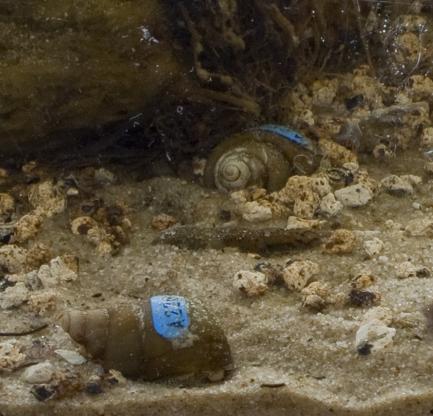More than 150 years after Darwin’s On the Origin of Species, scientists are still studying how living organisms evolve. Understanding the rate at which species adapt to new environments has always been a challenge, as the changes that take place between generations of offspring often occur too slowly to be readily observed but too quickly to be recorded in the Earth’s fossil record. Evolutionary biologists at the Smithsonian’s National Museum of Natural History are bridging this knowledge gap by studying living African freshwater snails and their fossil ancestors at Lake Malawi.
They discovered a unique collection of fossils revealing that although the fossil snails’ environment was constantly changing, their morphology did not. The researchers’ findings help explain the ways in which modern organisms are struggling to evolve and adapt to the changing planet. More information is available in the Aug. 7 issue of the Proceedings of the National Academy of Sciences of the United States of America.
Substantial water level fluctuations have taken place at Lake Malawi since the ice ages. In response to these extreme changes, freshwater snails have been forced to adapt—or go extinct. Smithsonian post-doctoral fellow Bert Van Bocxlaer and his colleague Gene Hunt studied the evolution of these organisms by comparing various physical features of living freshwater snail species to those found in the fossil record. They were surprised to discover that despite living in such a dynamic environment, the morphology of the snails largely stayed the same for thousands of years.
“Normally we expect morphological stasis in a relatively stable environment, where populations remain well-adapted to the prevailing conditions without much evolutionary change,” said Van Bocxlaer. “Our study, however, documents stasis in a dynamic setting, which is remarkable.”
Whereas the snails’ morphology remained fairly constant over time, certain changes currently observed, such as in body size, appear to be linked to species diversification. Four different living snail species evolved from a single ancestor in the fossil record, and genetic research conducted by other researchers confirms that this diversification happened recently (about 50,000-100,000 years ago). The evolution of the snails likely occurred very rapidly, either before or after the period of stasis documented in the fossil record.
African freshwater snails are not unique in their struggle to adapt to a new environment. For example, many endangered species today are threatened with extinction as they face changing habitats and limited food supplies due to global warming. Only time will tell if they are able to adapt and evolve to their new environments successfully. Alternatively, the common cold, antibiotic resistant strains of bacteria and the emergence of pesticide-resistant crops are all examples of organisms undergoing rapid evolution that can be easily measured in this lifetime. Much more work is required to fully understand the processes behind these slow and fast-paced evolutionary changes, but Van Bocxlaer and his team are making progress toward this goal.
# # #
SI-334-2013


